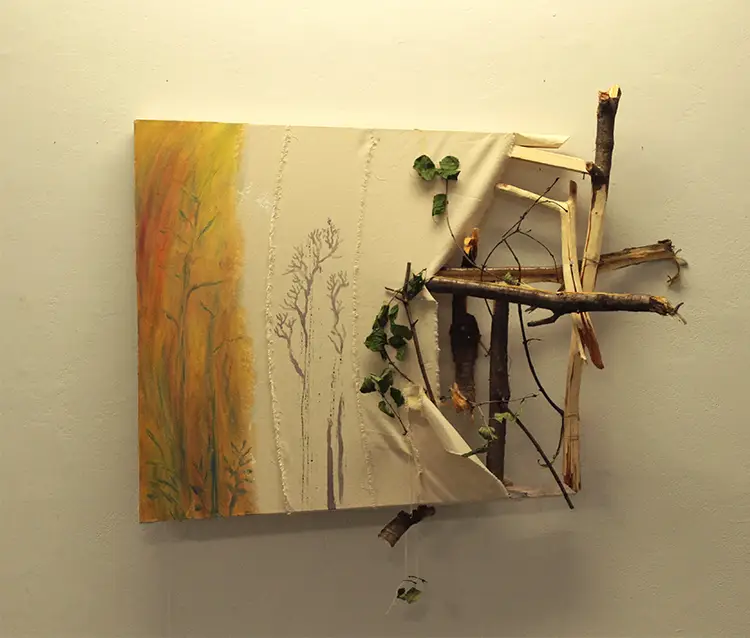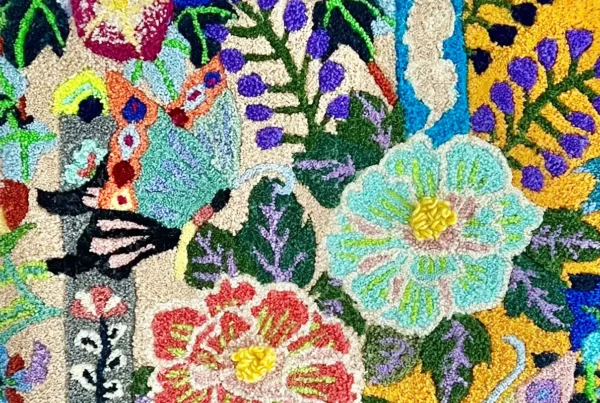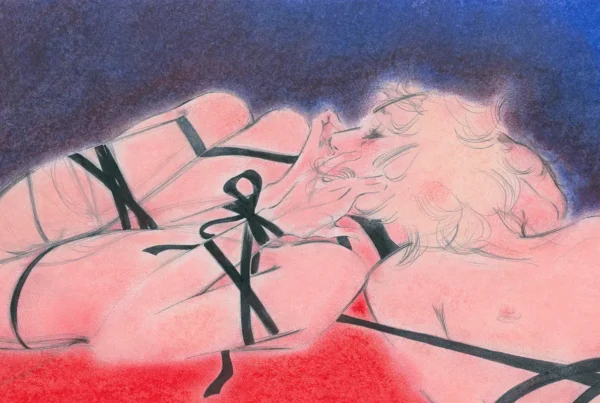“I made a pact with myself to continue creating, to make some effort everyday to further myself, no matter how small the effort.”
A Story Begins in the River Valley
Growing up in Toronto, Joshua Kennington found his earliest creative sparks amid the natural and urban dualities of his hometown. The lush expanse of the river valley near his childhood home became more than just a playground; it was a formative landscape that fed his imagination. Whether he was sketching after school or engaging in deep conversations with friends, Kennington began intuitively forming his own visual language. These early experiences shaped his instinct to build artistic narratives that are not only visually compelling but deeply personal, connecting his inner world with the stimuli of his environment.
Kennington’s initial foray into the art world wasn’t through formal training but through sustained curiosity and experimentation. Photography and drawing served as twin entry points, giving him space to observe and represent the world around him. Encouraged by a childhood friend who offered constructive guidance, he gradually committed to art not just as a pastime, but as a lifelong pursuit. A personal vow to invest daily effort—no matter how small—has become a cornerstone of his discipline. Over time, this promise evolved from a motivational exercise into a framework for creative growth, shaping how he approaches both process and progress.
Today, Kennington identifies as a multi-disciplinary artist, comfortably moving between painting, sculpture, and installation work. His output resists easy categorization, instead reflecting a complex interplay of emotional memory, spatial awareness, and conceptual rigor. From his roots in spontaneous sketching to his more deliberate sculptural interventions, he has consistently pushed the boundaries of what it means to create. The seamless transition from youth-driven curiosity to a mature artistic practice underscores not only his commitment to evolving as an artist, but also the influence of place, people, and internal promises on that evolution.
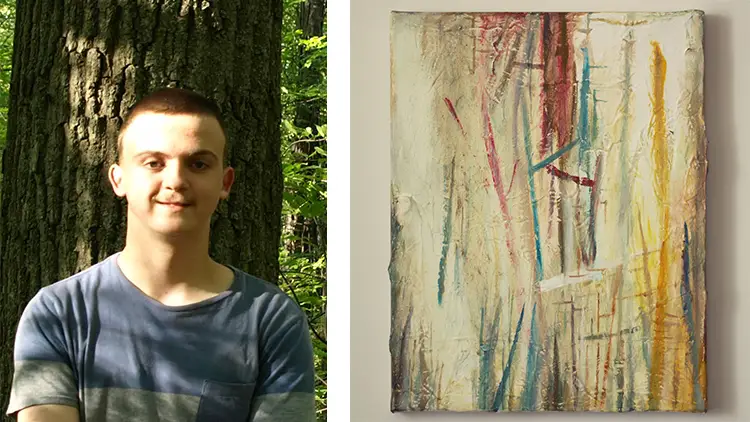
Joshua Kennington: Conversations Beyond the Frame
Kennington’s artistic practice defies singular definitions. While his oil paintings often lean into abstraction with nods to minimalism and expressionism, his sculptures and installations veer toward conceptual exploration, frequently engaging with post-structuralist sensibilities. What unites these diverse expressions is his fixation on materiality and presentation—he treats the gallery space not just as a venue, but as a participatory element within the artwork. By allowing the physical space to speak alongside the piece, Kennington opens up a visual dialogue that questions how we interpret, categorize, and emotionally respond to art.
Central to his work is the idea of perception—how individuals process visual and experiential stimuli differently, and how those divergences give rise to conversation and sometimes tension. His art frequently examines these points of friction, creating a kind of conceptual bridge between self and society, between observer and observed. This philosophical underpinning encourages viewers to confront not only the piece before them but also their own role in the act of interpretation. By extending his work beyond traditional formats and expectations, he asks us to re-evaluate our assumptions about what art is, and what it could be.
This interest in perception and discourse is not limited to theoretical engagement; it takes form in his practical choices, from composition to color palette. For example, his painting Terminus Oppidum Somnium, completed in late 2023, holds a special place in his practice. This work marked a turning point in how he approached color, pushing him to reevaluate and reconstruct the emotional power of his palette. More than just an aesthetic departure, the painting represented a mental shift—a recalibration of how he uses color as a narrative and emotional tool. In this way, Terminus Oppidum Somnium stands as both a personal milestone and a public statement, capturing his readiness to evolve without losing touch with his core questions.
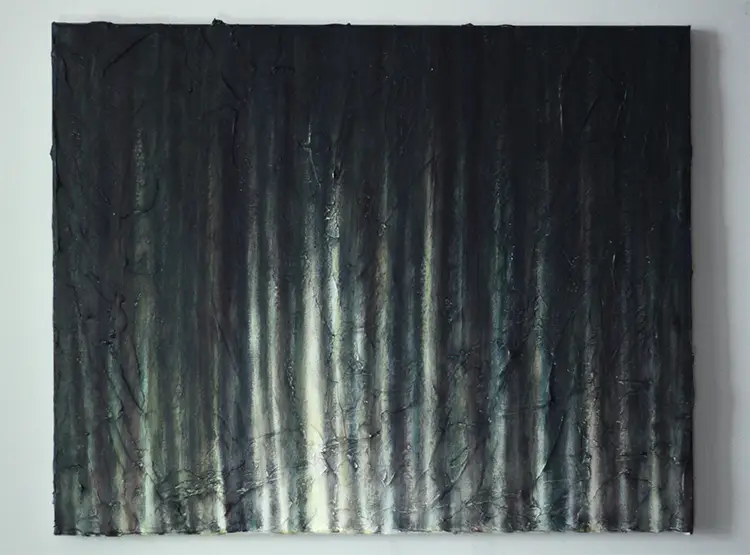
Material Dialogues and the Practice of Presence
Kennington’s studio environment is crafted to facilitate focused exploration, balancing spontaneity with structure. Music plays a pivotal role in shaping his creative mindset—whether brainstorming ideas or executing complex pieces, he relies on sound to keep his thoughts fluid and his energy anchored. Essential tools include either a sketchbook or a set of art supplies, ensuring that he’s always within reach of translating thought into form. He prefers an open schedule that allows creative flow to emerge organically, though he remains committed to setting aside time daily for his artistic pursuits.
Even when distractions arise, Kennington doesn’t view them as roadblocks but as brief detours. He maintains momentum by establishing flexible yet firm deadlines, giving himself the permission to adapt while also holding himself accountable. This method allows him to return to projects with renewed clarity, often finding new perspectives in the space between sessions. His ability to oscillate between focused intensity and reflective pause is part of what sustains the depth and complexity of his work over time.
Although oil painting has become his most developed medium—growing from his university studies into a deeply studied practice—Kennington has explored a variety of forms including acrylic, watercolor, sculpture, stop-motion animation, and wood carving. Each medium offers a different form of resistance and potential, allowing him to uncover new textures of meaning. Despite his growing specialization, he doesn’t see his past experiments as abandoned. Instead, they lie in wait, ready to be revisited as his conceptual needs evolve. This openness to multiple forms speaks to his broader artistic philosophy: that materials are not just tools, but partners in the conversation.
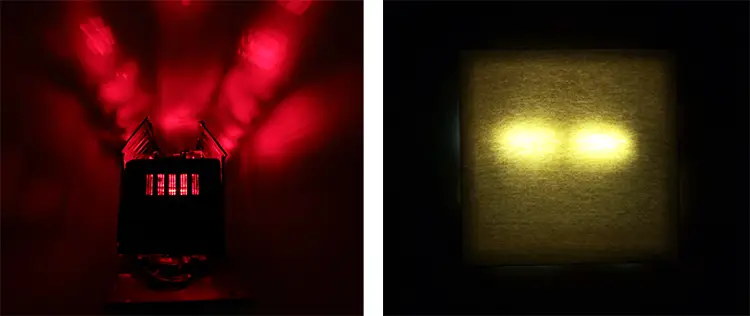
Joshua Kennington: The Unwritten and the Unspoken
There is one project in Kennington’s mind that remains unrealized, yet it carries more emotional weight than any he has completed so far. Though he has not yet decided on the scale or medium, he speaks of it with a mixture of anticipation and solemnity. It’s a work rooted in personal history, and he expects its execution to be both transformative and cathartic. The idea has been forming slowly over several years, gaining momentum as his skills and confidence have grown. Now, the time has come to begin, even if the exact shape of the project remains uncertain.
The significance of this future endeavor lies not only in its content, but also in its role as a personal threshold. Kennington knows that committing to this work means confronting emotions that are difficult to externalize, but he also sees it as an opportunity to transmute those feelings into something generative. In many ways, this project embodies the very themes that recur across his body of work—tension, transition, and the negotiation of meaning. Undertaking it will challenge him not just as an artist, but as a person, demanding honesty and vulnerability on a new scale.
Even in its unformed state, this work exists powerfully within Kennington’s practice. It underscores his belief that art should not be confined to polished objects or neatly framed conclusions. Instead, art becomes a site of ongoing inquiry—sometimes structured, sometimes chaotic, but always sincere. By giving this project the time and space it requires, Kennington affirms his commitment to authenticity over expediency. Whether or not it ever reaches public exhibition, the act of creating it will serve as a crucial chapter in his artistic evolution.
